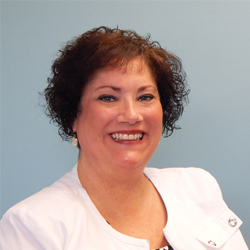Although it may not be in the cards for many clinical trial sponsors, being able to situate trials at dedicated (or research-only) study sites may provide winning advantages in terms of easing patient recruitment challenges and increasing flexibility of trial conduct, especially in the current pandemic conditions, research consultants told an ACRP webinar audience this week.
Presenting an online ACRP techXpo session on “Disrupting the Clinical Research Market: Leveraging Innovative Approaches and Technologies from Other Industries” on Tuesday (October 6), a team of Schlesinger Group experts highlighted a variety of best practices for study sponsors and sites to utilize to make trials easier on researchers and participants during—and possibly after—the COVID-19 crisis. The company collects research data and, through its Schlesinger Clinical side featuring 40 integrated research sites, provides consultation and study conduct services for industry, government, and contract research organization clients.
Rob Ramirez, executive vice president for strategic development with Schlesinger Group, said patient participation rates in studies managed by the company have actually risen since pre-COVID-19 times, “and it’s been a bit surprising.”
Kay Savio, vice president for clinical research, and Staci Lange, MEd, CCRC, a clinical project manager, attributed success at keeping studies going to emphasizing upfront communication with potential participants and to taking advantage of the flexibilities offered by dedicated study sites, even under the many restrictions the “new normal” has heaped upon clinical trial professionals.
As opposed to conducting trials in private practice clinics or large medical centers where the risks of contact with too many other people outside the research team has potential study volunteers on edge due to coronavirus concerns, using a study-only site means “traffic” can be strictly controlled, the Schlesinger team said. Further, the features of a dedicated site can be tailored to researchers’ needs for a particular trial and can even “mimic” the types of settings in which an eventual marketed medical product or technique would be utilized—for instance, a dentist’s office or infusion facility.
Meanwhile, “We want to do what we can to make [participants] comfortable within the bounds of a study protocol,” Lange said. If that means scheduling more virtual visits than in-person ones, or making sure only one participant is onsite at any given time, so be it. “We do have to be nimble and flexible if a particular [patient] group is a little more difficult to enroll than expected, and make sure that those who can benefit [from the study] are included and contributing to the knowledge base,” she added.
“The key here is to be prepared and to always have a Plan B,” Savio said regarding using the use of remote monitoring and virtual technologies. It’s imperative during the screening process to get a solid understanding of the potential participant’s technology capabilities, she noted. “Participants must feel comfortable with whatever technology is being used,” she stressed.
“In-person research is not going to stop [completely]—we just have to find safer and more comfortable ways for it to happen,” Lange added.
Author: Gary Cramer



